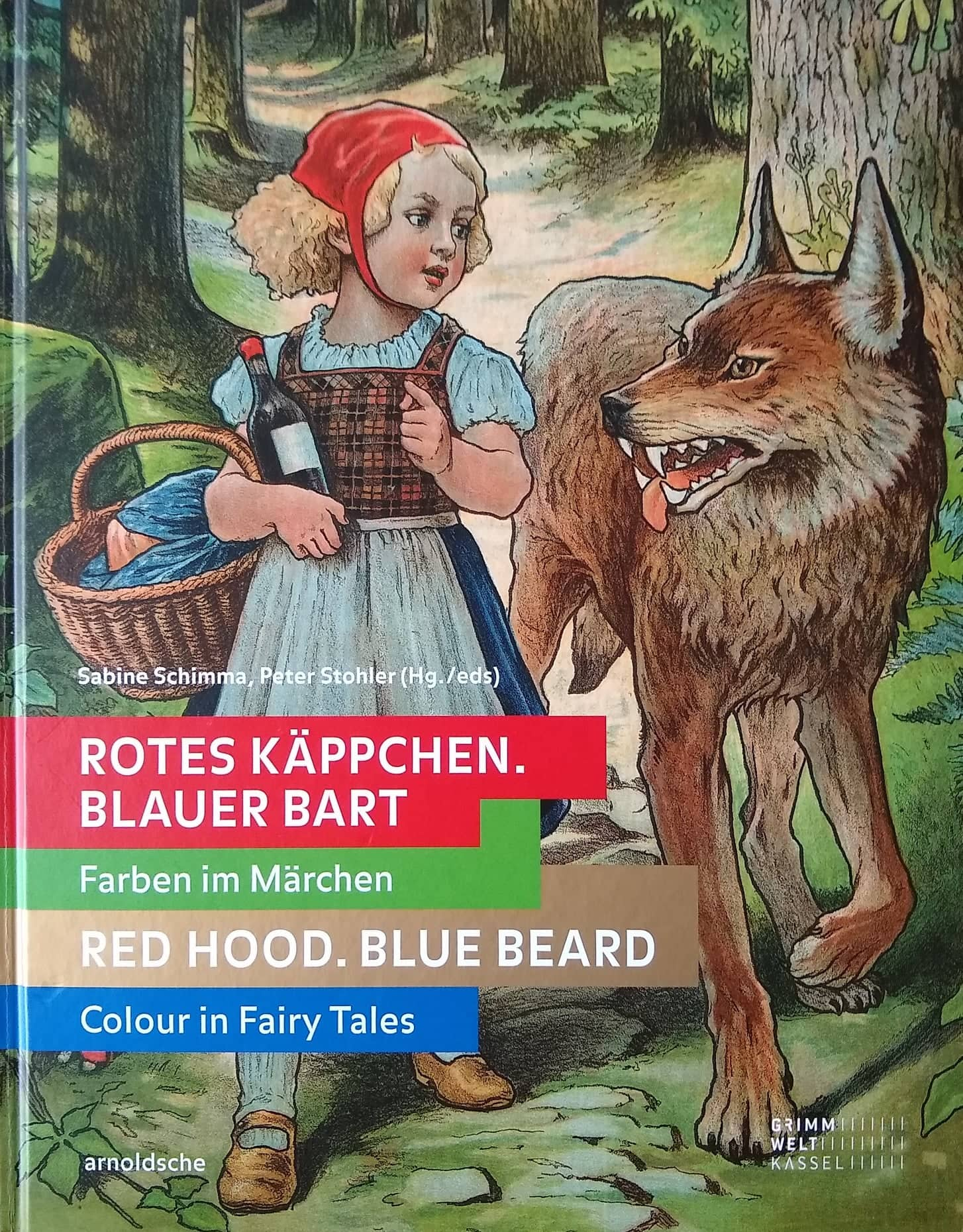by Sabine Schimma. The eighth and final chapter in:
Rotes Käppchen. Blauer Bart – Farben im Märchen. Red Hood. Blue Beard – Colour in Fairy Tales
© 2019 arnoldsche Art Publishers, Stuttgart, editors/authors, translator. ISBN: 978-3-89790-573-3 
(footnotes – references – removed)
Colours do not only have a more or less multi-layered symbolism when they occur individually; they are equally symbolic when they occur in simultaneous combinations or a certain succession. Even complex variegation, in which the individual colours are not always easy to distinguish, has an emblematic character.
In fairy tales the variegated appears predominantly on and with a figure who possesses negative characteristics. Disguised as an old pedlar-woman, the wicked stepmother offers Little Snow-White (GFT 53) a stay-lace of woven colourful silk, which the girl rashly purchases on account of its pleasing appearance. The stepmother laces Little Snow-White so tightly that she loses her breath. Snow-White and Rose-Red (GFT 161) come across the horrid dwarf, whom they keep encountering in the forest, in the evening sun, with an emptied-out bag of precious stones. The stones glitter and sparkle beautifully in all colours. The dwarf has previously stolen them from the enchanted prince, who has had to take on the form of a bear.
A very well-known figure appears in alternating clothing colours in various fairy tales. This is the Devil, as the archetype of evil. In Bearskin (GFT 101) he wears a green coat, in Frau Trude (GFT 43) he shows himself to the little girl with a head of fire, and in The Peasant and the Devil (GFT 189) he is little and black. Whereas the Prince of Darkness seeks to clad his evil core in alternating colours, the Virgin Mary, angels and saints, by contrast, manifest as unchanging luminous figures.
Other than in these fairy tales, in Hans Christian Andersen’s literary fairy tale Ole Lukøje the variegated appears as something positive. The figure of Ole Lukøje has his origins in the Sandman of folk tales. Ole Lukøje wears a silken coat that has a green, red or blue shimmer, depending on posture. This brightly coloured dynamism points to the infinite abundance of associations in dreamland. As ‘tools’, Ole Lukøje always carries two umbrellas: above the good children he opens the one bearing pictures, so that they will dream wonderful stories (Fig. 1), while the disobedient ones have to sleep beneath the umbrella without pictures, and the journey into the dream realm is barred to them.
Without doubt, the fairy tale in which colours most vividly symbolise the principal character’s growing inner tension is The Fisherman and his Wife (GFT 19). The inventor of the Colour Sphere and painter Philipp Otto Runge wrote it down in West Pomeranian dialect. In impressively portrayed meteorological events, colours demonstrate the formidable escalation of the presumptuous wishes of the fisherman’s wife, reluctantly passed on by her husband:(… …)
(…) (…)
(…) (…)
This time, the poppy goes back to ‘Publications’:
![]()
(Click here to go back to the beginning of the Red Hood. Blue Beard extracts.)
